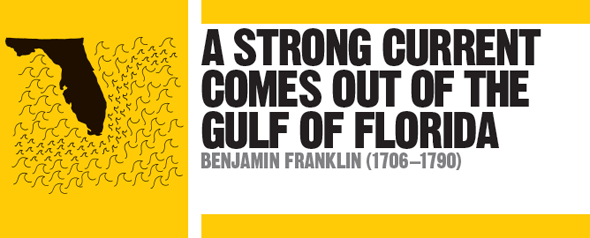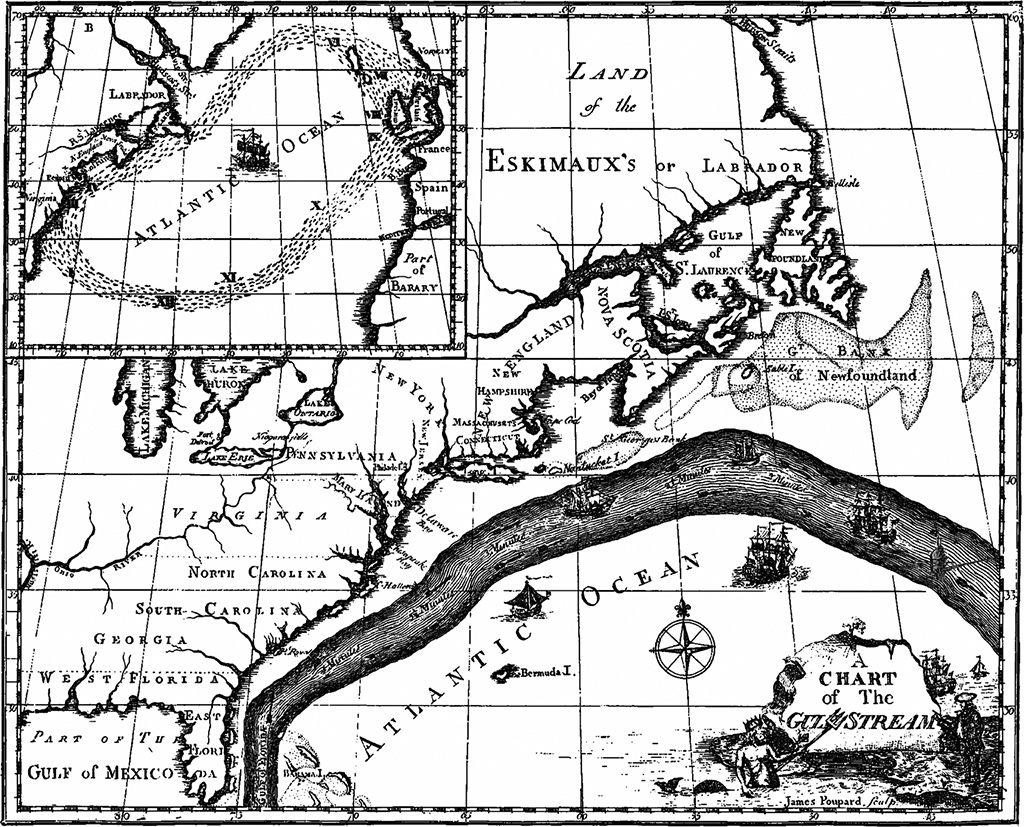
IN CONTEXT
Oceanography
c.2000 BCE Polynesian seafarers use ocean currents to cross between Pacific islands.
1513 Juan Ponce de Léon is the first to describe the strong currents of the Atlantic Ocean’s Gulf Stream.
1847 US naval officer Matthew Maury publishes his chart of winds and currents, compiled by studying ships’ logs and charts in naval archives.
1881 Prince Albert I of Monaco realizes that the Gulf Stream is a gyre (loop) and splits in two – one branch flowing north towards the British Isles, and the other south to Spain and Africa.
1942 Norwegian oceanographer Harald Sverdrup develops a theory of general ocean circulation.
The warm Gulf Stream current that flows eastwards across the North Atlantic Ocean is one of the greatest movements of water on Earth. It is driven east by prevailing westerly winds, and is part of a great loop that then recrosses the Atlantic to the Caribbean. The current had been known since 1513, when Spanish explorer Juan Ponce de León found his ship moving back north off Florida despite winds blowing him south. But it was only properly charted in 1770, by US statesman and scientist Benjamin Franklin.
Local advantage
As deputy postmaster of the British American colonies, Franklin was fascinated by why it took British packet ships delivering post two weeks longer to cross the Atlantic than American merchant ships. Already famous for his invention of the lightning conductor, he asked Nantucket whaling captain Timothy Folger why this might be. Folger explained that American captains knew of the west–east current. They could spot it by whale migrations, differences in temperature and colour, and the speed of surface bubbles, and so they crossed over the current to escape it, while the westbound British packet ships battled against it all the way.
With Folger’s aid, Franklin charted the current’s course as it flowed along the east coast of North America from the Gulf of Mexico to Newfoundland and then streamed east across the Atlantic. He also gave the Gulf Stream its name.

Franklin’s chart was published in 1770 in Britain, but it would be years before British captains learned to use the Gulf Stream to cut sailing times.
See also: George Hadley • Gaspard-Gustave de Coriolis • Robert FitzRoy